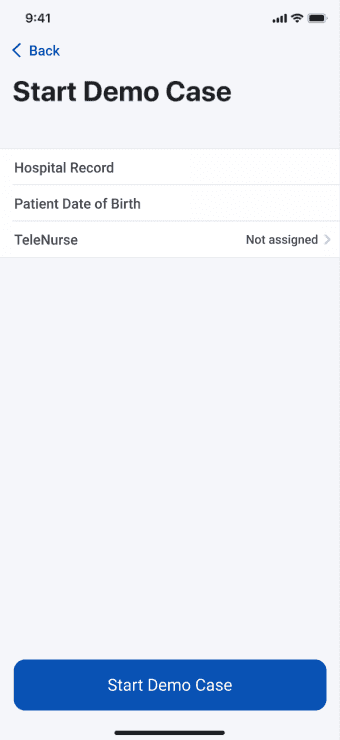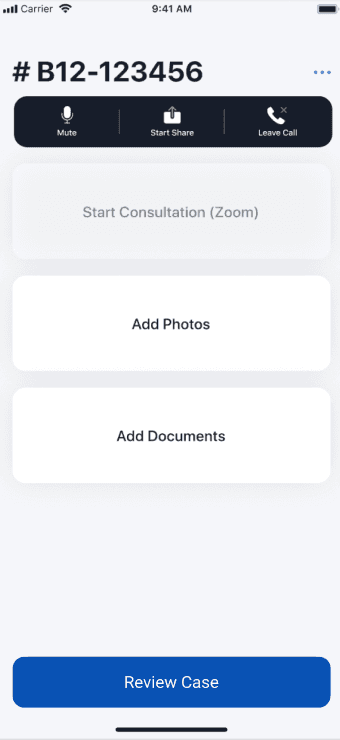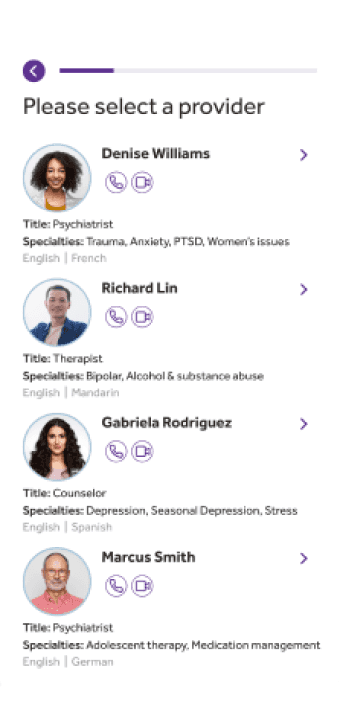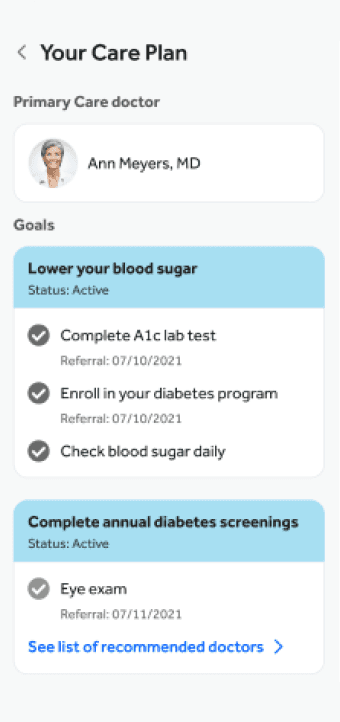
Telemedicine for primary care: a technology breakdown
April 11, 2023
- Home
- Industries
- Healthcare
- Telemedicine
- Telemedicine for primary care

by Andrey Korzun,
Head of Healthcare Solutions Department
Telemedicine solutions for primary care include all devices and software for effective remote video or audio consultations allowing MDs, DOs, nurses and physician assistants to address patients’ questions and provide preventive, diagnostic, and curative medical services remotely.
Such solutions are often integrated with patient information acquisition and storage systems (EHRs, patient portals, laboratory software), as well as remote patient monitoring devices and payment modules.
Employing telehealth solutions for primary care ensures flexibility and comfort to both patients and healthcare practitioners, as well as makes primary care services more accessible and affordable, making a positive impact on the population's health.
Key statistics about primary care telemedicine
of medical consultations were made to primary care physicians
CDC, 2019-2021
of 65+ patients gave televisits top scores for personalization and comprehensiveness
AGS, 2022
clinicians agree that telehealth helps them provide high quality care
AMA, 2021
The architecture of a primary care telemedicine solution
Key functionality of telemedicine for primary care
A primary care telemedicine solution possesses specific functionality to efficiently connect patients and physicians.
Consultations and diagnostics enablement
- Surveys to determine patients’ condition
- One-on-one video and audio consultations with front-line care providers
- Chats for synchronous and asynchronous communication
- Secure image sharing
- Recordings of therapy sessions and consultations
- Integration with EHR systems for a full view of patients’ health
Medication management
- Medication plan development
- Treatment adherence logs
- Adverse effect or allergy reports
- Orders and re-fills from preferred pharmacies
- Suitable treatment substitution finder
- Test and/or screening prescription
- Test and/or screening scheduling with the selected labs or specialists
Education
- First aid instructions
- Сondition and care management training for different age groups
- Educational, clinical, and psychological support for people with chronic conditions
- Educational materials about rare conditions for medical personnel
- Immunization schedules
- Self-check instructions
Security
- Compliance with privacy and security regulations (HIPAA, GDPR, etc.)
- Software developed according to the major security and interoperability protocols in the industry (OWASP, FHIR, etc.)
- Multi-factor authentication
- Data encryption
- Role-based access to patients’ data
Expand your healthcare organization’s reach with a telemedicine solution
Essential integrations for primary care telemedicine
Clinics can enhance their teleconsultations by integrating the software with other medical tools and software. Still, it is crucial to seamlessly integrate telemedicine solutions with other systems to secure patient data exchange.
EMR/EHR
Healthcare IoT
Pharmacy management software
Medical data analytics software
Primary care telemedicine solution
Billing and insurance management solutions
Medical image software
Hospital management software
Laboratory management systems
Enables first-line medical workers to access patients’ full medical history
Helps conduct remote examinations and provides patients’ vitals to primary care physicians for a clearer view of the condition
Enables online medication prescriptions and simplifies the placement and delivery of orders and refills
Enhances the accuracy of diagnoses and helps physicians predict the likely developments of conditions
Billing and insurance management solutions
Facilitates primary care reimbursements and simplifies communication with insurance providers
Medical image software
Allows clinicians and patients access to CT scans, X-rays, ultrasounds, and other medical images
Simplifies care management procedures (e.g. scheduling patient appointments and referring them to specialists)
Speeds up the delivery of test results to patients and their primary care providers
Why choose telemedicine for primary care
About 60% of Americans either do not have or do not use a primary care physician, which deteriorates the population’s health and puts additional pressure on hospitals and ERs. Telemedicine, however, is able to solve the above problem and offer some other additional benefits.
Better access to care
Telehealth helps patients connect to their medical provider without wasting time and energy on travel and waiting in line. This is especially valuable for people in rural areas, with disabling mental health conditions, or the elderly. Additionally, telemedicine reduces costs by 61% compared to in-person visits, found Alliance for Connected Care, which influences people’s decision to opt for virtual care. Combine all of these benefits with longer sessions from attentive medical personnel, and you’ll get a recipe for increased patient satisfaction.
Scheme title: Telemedicine’s influence on accessibility of quality healthcare and telemedicine’s effect on patient satisfaction
Data source: ama-assn.org — 2021 Telehealth Survey Report
Improved efficiency of primary care professionals
Medical workers are at especially high risk of burnout after the pandemic, and clinics across the US report devastating shortages of physicians and, even more so, nursing staff. Telemedicine enables healthcare professionals to work from home, balance their personal and professional life, get compensation for their work quicker, and be less likely to feel disappointed in their job. Enabling its employees to consult virtually, healthcare organizations ensure high personnel retention rates and enhanced productivity.
Scheme title: The effect of telemedicine on medical staff’s professional satisfaction
Data source: ama-assn.org — 2021 Telehealth Survey Report
Over 50% of physicians indicate telehealth has increased their professional satisfaction
Increased revenue and resource optimization
Telehealth solutions for primary physicians, telenursing software, and pediatric virtual care solutions allow medical organizations to cover more area with their services, reach out to more patients, and expand their service offering, driving more revenue. A lot of people are even willing to pay more for virtual care if it means they don’t have to skip work. Telemedicine can also help lower the number of “no-show” patients as well as those who have put off their visit to a primary physician until they need ER or ICU services, controlling patient flow and supporting resource optimization.
Real-life examples of telemedicine in primary care
Our team delivered a suite consisting of a mobile telemedicine app and a web-based admin portal for nurses, serving as the first line of medical help for sexual assault victims in rural and underserved areas in the US. This HIPAA-compliant app supports high video resolution during patient examination, flawlessly connects to smart remote monitoring and imaging devices, and securely transmits data. It enables nurses to get 24/7 consultations from experts for accurate evidence collection while providing a safe environment for the victims.
Scheme title: Mobile telehealth interface
Data source: itransition.com — A remote patient monitoring and mobile telehealth suite


Personalized virtual primary care
Teladoc’s Primary360 is an app that connects patients to the Care Team – their primary care physician, nurse, consultant, mental health specialist, and other medical and administrative staff that help patients check their health and manage chronic conditions and refer them to specialists for in-person visits if needed. The care plan is complemented with a blood pressure cuff to enhance the checkups’ accuracy and can be expanded by adding consultations with more medical specialists and advanced technology, like AI-powered chatbots, medical image analysis, or condition analytics.
Scheme title: Personalized primary care app interface
Data source: teladoc.com — Primary360: Primary care to become your healthiest self



Virtual exam kits for rapid response e-visits
In the Detroit area, patients can access virtual medical care in under two hours any time of the day via the Henry Ford Health System (HFHS). For better diagnostic precision, patients can use a remote examination device with such accessories as an infrared thermometer, camera, otoscope, stethoscope and tongue depressor. Then, if physical help is needed, virtual care professionals can call paramedics to assist the patient and administer diuresis, hydration, breathing treatments, or antibiotics.
Primary care telehealth software implementation roadmap
Healthcare organizations usually go through five stages during telehealth software adoption for primary healthcare.
1
Requirements gathering
IT consultants and industry experts collaborate with an in-house team of medical professionals to clarify the health organization's main goals and requirements for the telemedicine software. Proceeding from this, they choose the most suitable technology stack and the development approach.
2
Project planning
The organization’s in-house medical team and the vendor’s team create a detailed plan of the implementation process, consisting of hardware and network preparation, solution installation, integration, and post-implementation tuning.
3
Development
A secure and compliant software with a patient-centric interface is developed and connected to the necessary third-party services, or upgraded with additional modules, and tested to fix any bugs. The software’s quality is also continuously assured throughout the process.
4
Deployment and training
The telehealth solution is installed into the organization's health IT ecosystem. The vendor or a third-party consultant conducts training sessions for personnel. Established medical workflows are modified in view of the telemedicine solution.
5
Support and modernization
The vendor’s team provides post-implementation support to resolve any issues that come up during the solution’s usage, monitor its performance, and implement upgrades when necessary.
Cost factors and ROI
The cost of a primary care telehealth solution depends largely on the required capabilities, the size of the organization and its patient base as well as the number of integrations. Using low-cost or open-source modules will decrease the size of development investment, while numerous customizations will increase the costs significantly. On average, primary care telehealth software costs range from $150,000 for a simple solution that enables video or audio visits, consultation scheduling, and treatment plan. The price for a complex suite with AI-enhanced chatbots, analytics, and RPM capabilities will start from $400,000. A healthcare provider can expect a return on investment in roughly six months after the system’s successful implementation.
Scheme title: The correlation between the solution’s complexity and cost

Innovate your primary care with telemedicine
There is no turning back from telemedicine anymore: it is praised by physicians for returning satisfaction to their work and by patients for making medical services more accessible. So it’s no wonder that the majority of healthcare organizations across the US are either planning to offer hybrid care services or are already providing them. If you are among the healthcare innovators who want to provide accessible continuous care to more patients, give medical professionals better working opportunities, and open new revenue streams, consider implementing telemedicine for primary care sooner rather than later.

Boost your primary care’s efficiency with a custom HIPAA-compliant telehealth solution
FAQs about telemedicine for primary care
Getting started with telehealth solutions can seem overwhelming, but our experts can help you at any step of the implementation journey, including answering the most pressing questions.
What are the most popular primary care telemedicine platforms?
We recommend opting for a custom solution tailored to the particular needs of your medical practice. However, for those who want a ready-made solution there are a number of platforms to jump into: Sesame Care, PlushCare, Teladoc, MeMD, Amwell, and others.
Is primary care telemedicine covered by Medicare?
Medicare, Medicaid, and other insurance plans usually cover virtual visits to primary care providers. For more information on how to reduce costs of your televisit, talk to your insurance company.
What are the hallmark qualities of telemedicine solutions?
Primary care telemedicine software should be secure, reliable, have an intuitive interface, and protect your patients’ data. It also should be flexible and scalable to enable your practice to grow and change.

Service
Telemedicine software development: key features, integrations & services
Itransition offers end-to-end custom telemedicine software development and implementation services for healthcare organizations of any size and specialty.

Case study
Telemedicine-ready EHR
Development and testing of a Telemedicine-enabled EHR, integrated with innovative voice recognition, smartpen and clinical text analysis features.

Case study
A remote patient monitoring and mobile telehealth suite
Learn how Itransition developed a remote patient monitoring and telehealth platform for sexual assault victims for a US research center.

Insights
Telemedicine for pediatrics: a comprehensive overview
Discover how to successfully choose, integrate, and implement telemedicine solutions for pediatrics to improve your medical childcare.

Service
Remote patient monitoring solutions: a 360° overview
Discover the main features of remote patient monitoring solutions, their benefits for healthcare organizations and patients, and effective implementation tips.

Insights
A patient engagement platform: making it a success
A patient engagement platform may help increase providers’ revenue. But how to make it a success? Check out our tips.